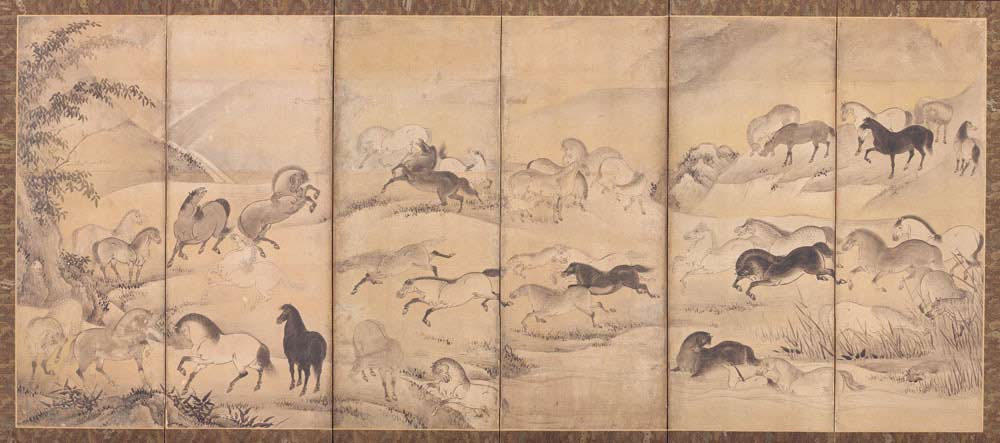Traditional folding screens (byobu)
Japanese Art Collection
The term “byobu” refers to all traditional Japanese screens. Folding screens comprise several panels, joined together and decorated with painted pictures or calligraphy.
A number of activities may take place within the discreetly separated space that is defined by the folding screens, such as secluded writing or reading, private meetings and household activities, sleeping, the tea ceremony as well as a number of festivities.
The first surviving screens consisted of a legged single panel, bound with a wooden frame. Folding screens are later imported from China and Korea in the 8th century. Soon after, they are also made in Japan, though due to their high production cost they become a luxury. They are initially used in the official imperial court ceremonies in Kyoto, and they decorate the daimyo (samurai general) mansions and Buddhist sanctuaries. During the Muromachi period (AD1392-1573) they become particularly popular and depict landscapes influenced by the Chinese monochrome painting.
The Momoyama (AD1573-1600) is the Samurai period who, in order to demonstrate their economic and social power, built mansions and castles for the decoration of which they invited famous artists, such as Kanō Eitoku (AD 1543-1590) with smooth layers of vivid colours applied on a bright gold background. By the time the Tokugawa shōgun military command centre was transferred to Edo (present-day Tokyo), the Tokugawa or Edo period
begins (AD 1600-1868). Folding screens of that period are usually created in pairs and represent epic, landscape, animal, plant, four season scenes, or compositions of everyday city life.
Kanō Sanraku or Kanō Mitsuyori (AD 1559 – 1635) was an apprentice of the greatest artist of the famous Kanō painting school, Kanō Eitoku (AD 1543-1590), who eventually adopted him. The N. Hadjivassiliou collection pair of folding screens with horses is extremely rare. The horses are drawn before a winter landscape, as suggested by the presence of the bamboo, the plum-tree (AE 10342) and the pine-trees (AE 10343), all symbols of winter. They either rest (AE 10342) or play (AE 10343) in round, grouped arrangements, creating pairs of opposites (mobility – immobility). The horses, the warriors’ inseparable battle ompanions suggest that they probably decorated a Samurai house.The term “byobu” refers to all traditional Japanese screens. Folding screens comprise several panels, joined together and decorated with painted pictures or calligraphy.



